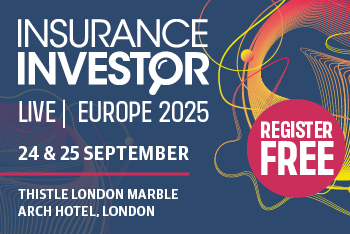GBAM: Moving on from current ESG practices to new resilience will be key for asset managers
ESG is dead, long live ESG? GBAM members discuss the future of ESG and resilience in an era of changing investment norms – how will this affect operations?
Fund Operator Editor POSTED ON 11/24/2025 10:00:00 AM
 @Pixabay.
@Pixabay.
The Group of Boutique Asset Managers (GBAM) autumn meeting in Málaga, members identified that global investors are prioritising energy security, supply-chain strength and governance quality over labels, with real assets — especially gold — back in demand.
However, it was a shift from ESG investing to resilience that was the biggest strategic change.
What could this mean for investors – and their operations?
GBAM is a global network of senior executives from boutique asset management firms.
Its members recently released a report saying they have identified “a decisive shift in global investor appetite away from ESG badging” and towards a broader “resilience investing” framework during its autumn meeting in Spain.
“Resilience is the language investors recognise, energy that works when it’s needed, supply chains that hold under stress, and governance that’s clear and defensible,” said Tim Warrington, Chairman of GBAM.
What did GBAM say?
In November, senior leaders from MAPFRE AM, Azvalor, SKAGEN Funds, Pareto Asset Management, Aubrey Capital Management, Fisch Asset Management, First Avenue Investment Management, Ranmore Fund Management and Farview Invest met in Málaga to exchange perspectives on global markets, governance, and client trends.
Institutional, retail and private-wealth investors are now prioritising tangible resilience, energy security, supply-chain strength, and governance quality over box-ticking ESG compliance.
"Exclusions, which once ruled out entire sectors such as defence or nuclear, are softening as investors refocus on real-world security and economic continuity."
In its coverage of this, GBAM members said that what began as “a reaction to ESG fatigue” is evolving into a more pragmatic approach to responsible investing.
Exclusions, which once ruled out entire sectors such as defence or nuclear, are softening as investors refocus on real-world security and economic continuity.
Sweden’s “total defence” model was cited as an example of how sustainability and resilience are converging in both policy and portfolio design. The shift, members agreed, reflects growing demand for transparency, financial materiality, and plain-spoken communication over marketing language.
“The conversation has evolved from focusing on ESG as a label to thinking more deeply about resilience and lasting impact."
These changes could be very important for asset and fund managers if they choose to widen the scope of what can be included, as in many areas, regulation could be applicable around certain terminology and omissions.
“The conversation has evolved from focusing on ESG as a label to thinking more deeply about resilience and lasting impact,” said Juan Bernal, Group Chief Investment Officer at MAPFRE.
The industry has long struggled with the parameters of where impact investing/ESG/sustainability meets the wider investment world.
“There are two main things that you need the industry to mature on,” Seb Beloe, Head of Research, WHEB Group Asset Management, told Fund Operator in an interview in 2024. “The first is around thresholds of impact. Within the greenwashing guidelines, you have to make sure that you're clear and not misleading or imbalanced in what you report.
Beloe was adamant that companies needed to be more open and transparent, even though there were struggles with the admin burden and guidance. “You can’t only mention the good things that a company does and not the bad things, but we don't have a good threshold for that,” he said. “When does something become bad? Because every company will have some negative impact somewhere, we’re all using electricity that is, at least in part, derived from fossil fuels. We all have a carbon footprint.”
Real assets – good, bad, and more…
The discussion also highlighted renewed investor interest in real assets, particularly gold, as a store of value and hedge against financial instability.
“Years of under-investment in mining and energy, combined with changing central-bank reserve policies, are re-establishing gold’s role within diversified portfolios,” said the report.
GBAM’s members described this as part of a practical “resilience toolkit” alongside cash-generating businesses and quality credit assets designed to preserve value and withstand volatility.
Among many countries that are covered by GBAM members, economic growth remains resilient; however, they observed that productivity challenges persist.
They highlighted Spain as one such case.
“Yet the rapid expansion of advice-led distribution, the professionalisation of insurance-based advisory networks, and a fund-tax regime that rewards long-term investing have made Spain one of Europe’s most dynamic investment landscapes, where boutique managers can thrive through clarity of strategy and quality of service rather than scale alone,” GBAM said.
Operational issues – changes and modernisation
Governance and culture were also central to the agenda.
Delegates said smaller companies need to learn to articulate “authentic” narratives on leadership, Diversity, Equity and Inclusion (DEI) and succession without the bureaucracy of large institutions.
The consensus was that boutiques should focus on consistency of message, measurable internal progress where relevant, such as recruitment and training and collaboration between companies to build “shared industry initiatives, rather than reacting to fleeting trends”.
Please Sign In or Register to leave a Comment.
SUBSCRIBE
Get the recent popular stories straight into your inbox






